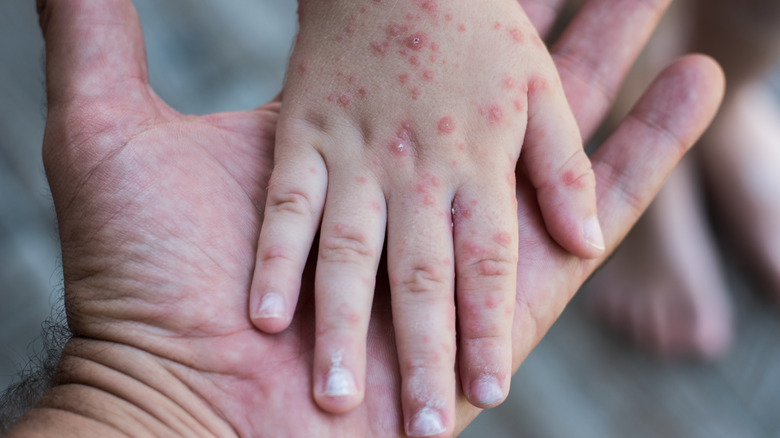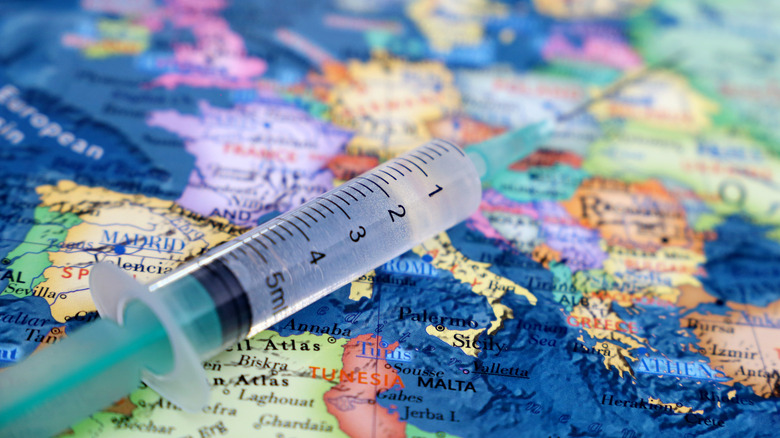Does Rubella Still Exist?
You may have heard of rubella, and you might even be old enough to remember getting your mumps, measles, and rubella (MMR) vaccine. Rubella, also known as German measles, is a contagious disease that was common in the U.S. before a vaccination program began in 1969. Children are most affected by the virus, which is characterized by a rash that begins on the face and spreads over the rest of the body. Most children usually recover from rubella, but babies born to women infected with the virus can be at risk of developing congenital rubella syndrome (CRS). This can cause several problems, including heart defects, deafness, cataracts, and slow learning.
From 1964 to 1965, some 12.5 million people in the U.S. were infected with rubella. After the vaccination program, however, cases in the U.S. dropped. Currently, the number of people diagnosed with it is less than 10 annually (via the Centers for Disease Control and Prevention).
Rubella is not eradicated
Rubella is still around, but it is not nearly as dangerous as it once was. The disease is no longer considered endemic, and it was eliminated from the U.S. in 2004. By 2015, rubella had been eradicated from North and South America, per Smithsonian Magazine. While Rubella has been eradicated from the Americas, it is still present in European, Mediterranean, Asian, and African countries. In fact, some 100,000 babies are still born with CRS yearly, according to the Journal of Infectious Diseases.
The good news is that vaccines are highly effective and safe, even for pregnant women and children. For this reason, experts believe that eradicating rubella is possible. They also think that it would be easier than eradicating measles and mumps because those diseases are more infectious than rubella. That said, it may take some time to get enough of the population vaccinated to eradicate the disease, per the Journal of Infectious Diseases.


